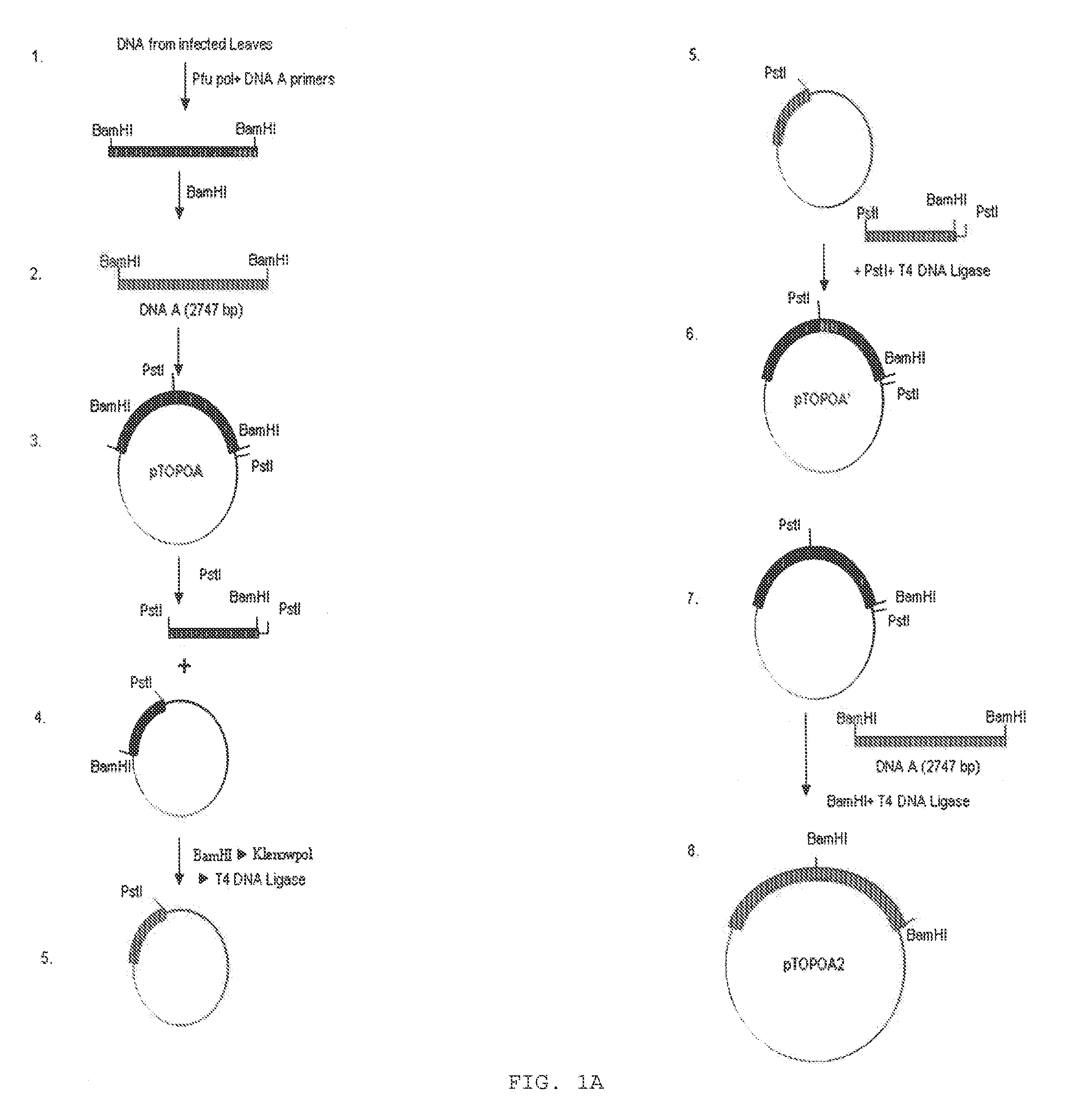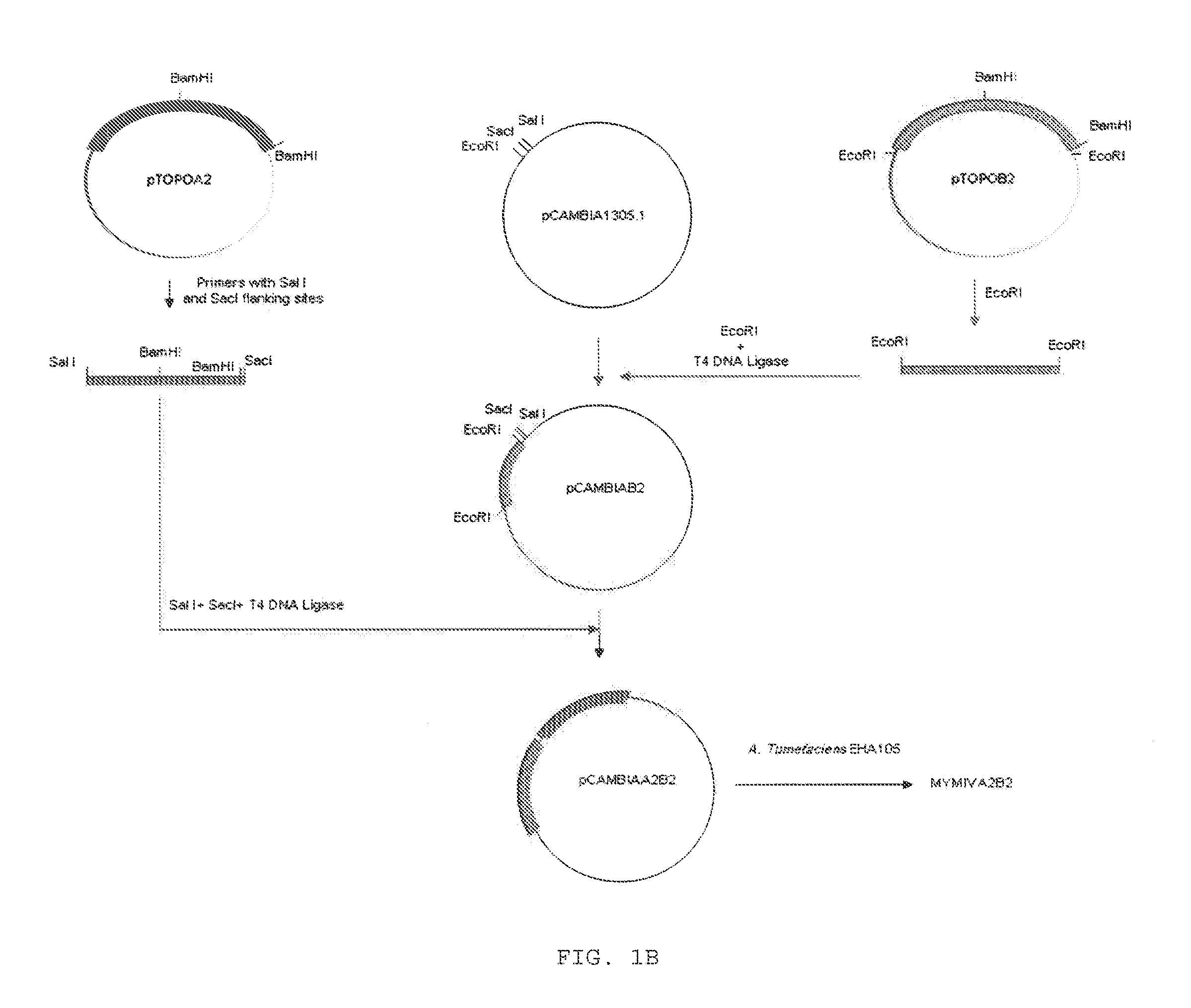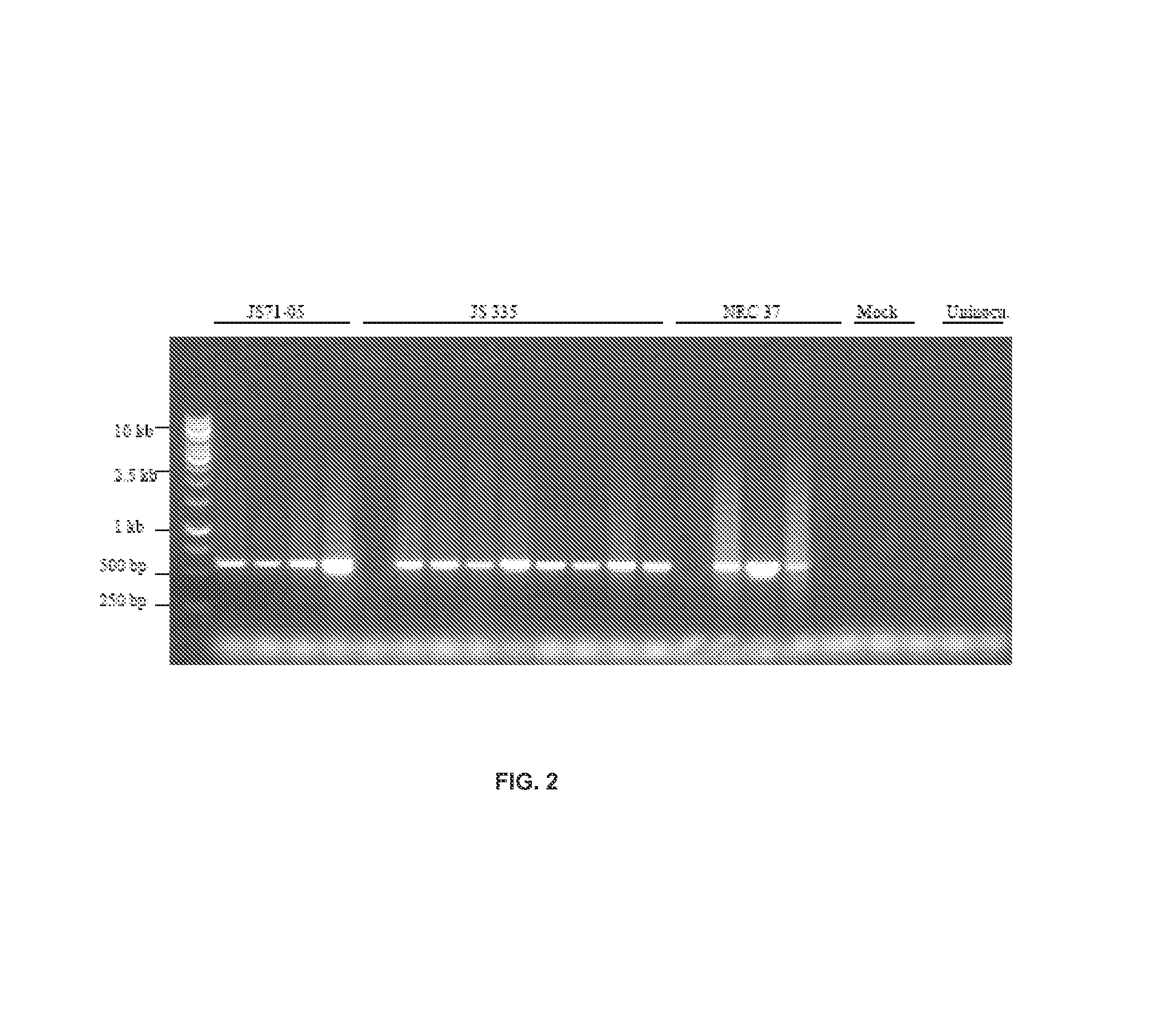Chimeric construct of mungbean yellow mosaic india virus (MYMIV) and its uses thereof
a technology of yellow mosaic india virus and chimeric construct, which is applied in the field of molecular biology, can solve the problems of high cost, low frequency of infection, and inconvenient maintenance of pure virus-containing whiteflies,
- Summary
- Abstract
- Description
- Claims
- Application Information
AI Technical Summary
Benefits of technology
Problems solved by technology
Method used
Image
Examples
example 1
PCR Amplification and Cloning of Full Length MYMIV DNA A
[0054]Total DNA from symptomatic leaves of Soybean (Glycine max) plant was prepared by CTAB method or methods known in the art. Two sets of primers having overlapping region with BamHI site at their 5′ ends were designed from published sequence for DNA amplification to amplify full length MYMIV DNA A. The reaction condition was 30 cycles with melting, annealing and polymerizing conditions of 30 sec at 94° C., 1 min at 55° C. and 12 min at 72° C. respectively. The nucleotide sequence of the primers (Afl1 and Afl2) used in the amplification reaction is as set forth in the SEQ ID NO: 1 and SEQ ID NO: 2.
[0055]
Afl1: GGATCCATTGTTGAACGACTTTCCSEQ ID NO: 1Afl2: GGATCCCACATTGTTAGTGGGTTC.SEQ ID NO: 2
[0056]Amplification reactions were carried out using Pfu polymerase (Stratagene) according to manufacturer instructions. Other polymerase enzymes known in the art also can be used for the amplification of the said DNA figment. Amplified produc...
example 2
Construction of Recombinant Vector pTOPOA2 Comprising Tandem Repeat Clone (Dimer) of DNA A
[0059]Tandem repeats (dimers) of MYMIV DNA A was constructed by further cloning of a full length fragment of DNA A in the original clone-pTOPOA. MYMIV DNA A insert in recombinant vector pTOPOA has two BamHI sites, one at the beginning and another at the end. For making dimer, one BamHI site was inactivated and other BamHI site was used for the cloning of a BamHI digested second full length DNA A fragment. In brief, PstI digestion of pTOPOA released 1.5 kb (PstI small fragment) and 5.2 Kb (PstI large fragment) fragments. The large fragment was self-ligated. The plasmid thus obtained was designated as pTOPOA′ and contains only one active BamHI site. The BamHI site was then inactivated by treating with Klenow fragment of E. coli DNA polymerase. The PstI small fragment, which was obtained from the digestion of the recombinant vector pTOPOA was cloned in the vector pTOPA′ at PstI restriction site to...
example 3
PCR Amplification and Cloning of Full Length MYMIV DNA B
[0060]Total DNA from symptomatic leaves of Glycine max infected with MYMIV plant was prepared by CTAB method. Two sets of primers having overlapping region with BamHI site at their 5′ ends were designed from published sequence for a PCR reaction to amplify full length MYMIV DNA B. The reaction condition was 30 cycles with melting, annealing and polymerizing conditions of 30 sec at 94° C., 1 min at 55° C. and 12 min at 72° C. respectively. The nucleotide sequence of the primes used in PCR reaction is shown in SEQ ID NO: 3 (Bfl1) and SEQ ID NO: 4 (Bfl2).
[0061]
Bfl1: CGGGATCCAATGATGCCTCTGGCAATTTGTGSEQ ID NO: 3Bfl2: CGGGATCCTGGAGATTCAATATCTCAG.SEQ ID NO: 4
[0062]Amplification reactions were carried out by using Pfu polymerase (Stratagene) according to manufacturer instructions. Other polymerase enzymes known in the art also can be used for the amplification of the said DNA figment. Amplified product (2671 bp) was directly cloned into...
PUM
| Property | Measurement | Unit |
|---|---|---|
| temperature | aaaaa | aaaaa |
| pH | aaaaa | aaaaa |
| pH | aaaaa | aaaaa |
Abstract
Description
Claims
Application Information
 Login to View More
Login to View More - R&D
- Intellectual Property
- Life Sciences
- Materials
- Tech Scout
- Unparalleled Data Quality
- Higher Quality Content
- 60% Fewer Hallucinations
Browse by: Latest US Patents, China's latest patents, Technical Efficacy Thesaurus, Application Domain, Technology Topic, Popular Technical Reports.
© 2025 PatSnap. All rights reserved.Legal|Privacy policy|Modern Slavery Act Transparency Statement|Sitemap|About US| Contact US: help@patsnap.com



